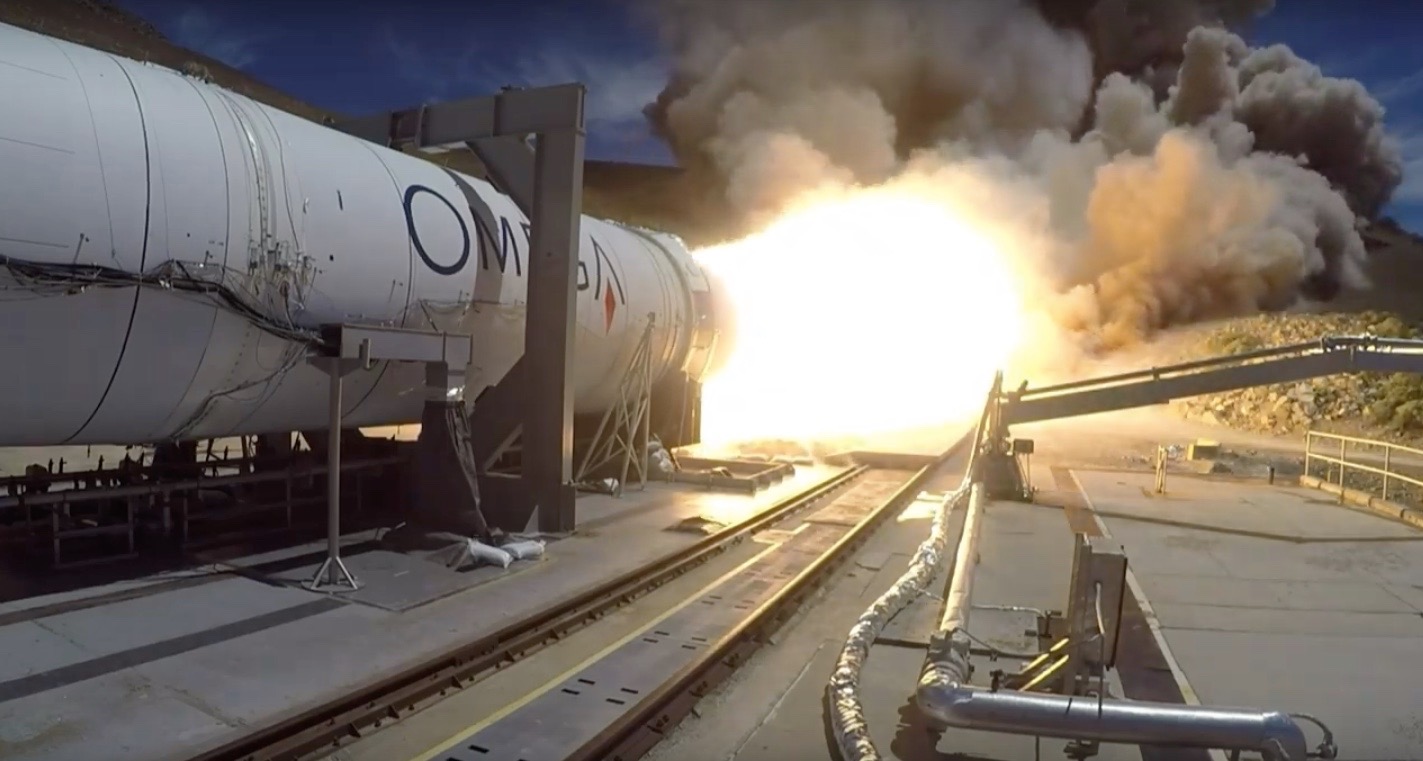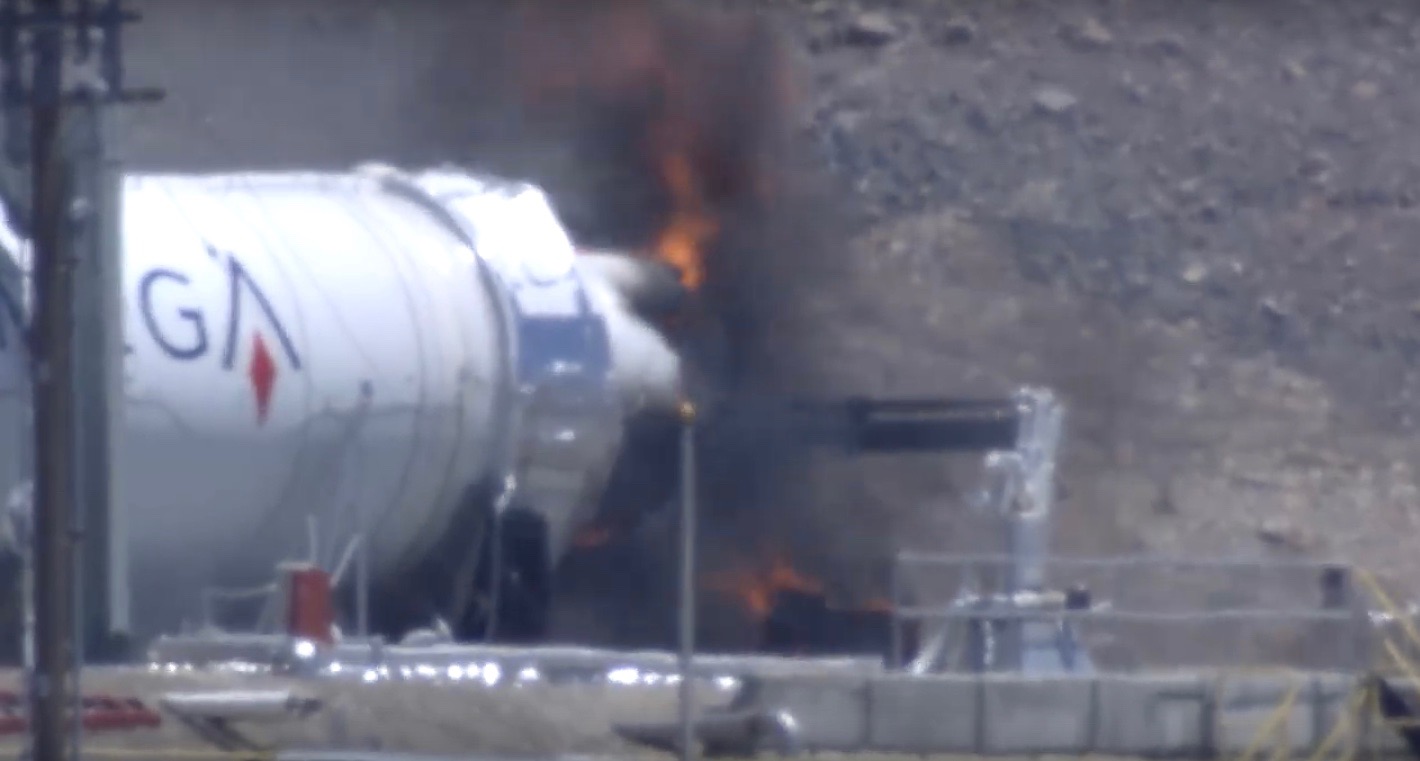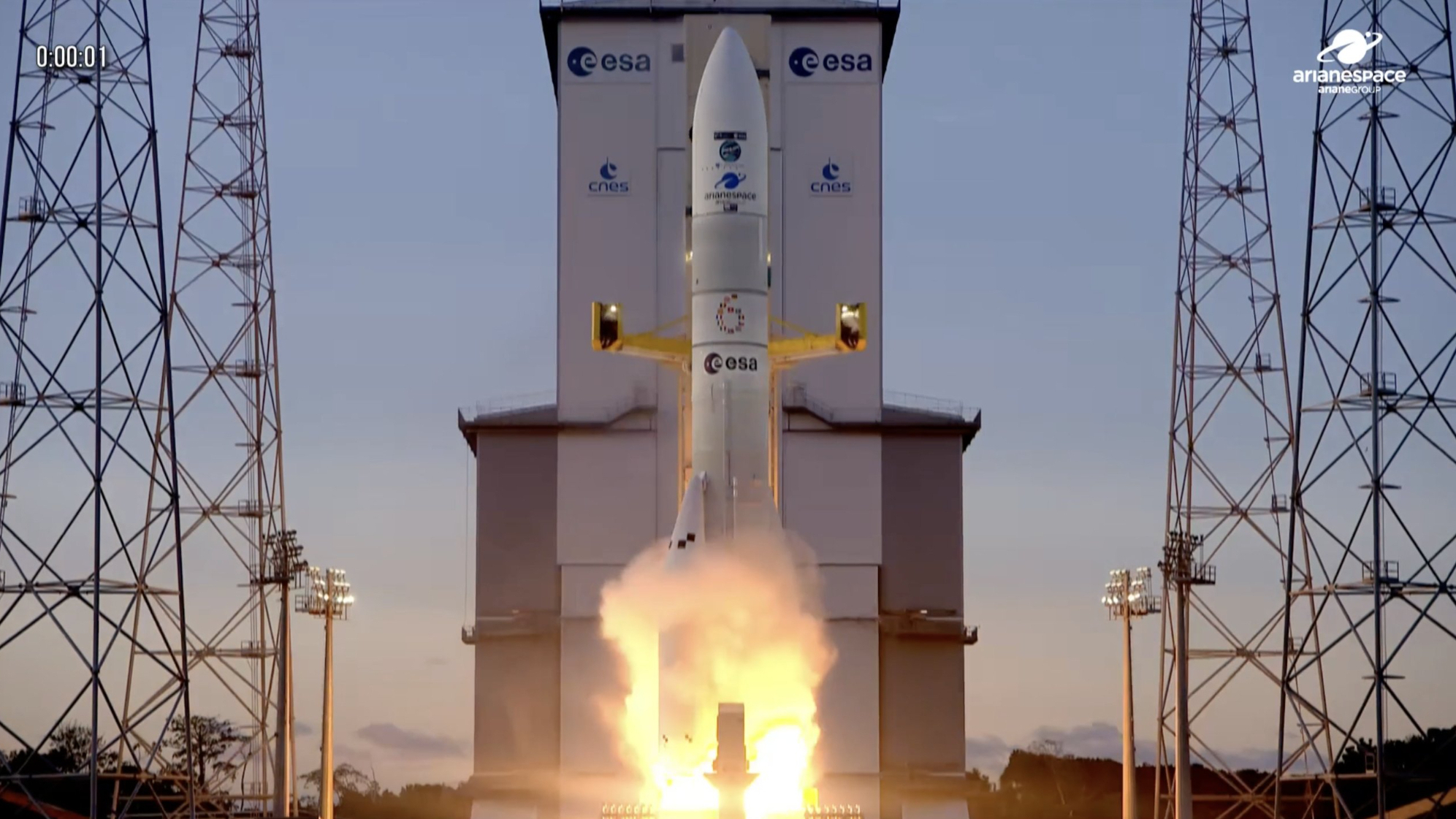Northrop Grumman Investigates Anomaly from 1st OmegA Rocket Motor Test
A powerful new rocket showed its stuff today (May 30) during a dramatic ground test that didn't go exactly as planned.
Aerospace company Northrop Grumman fired the first stage of its OmegA launcher this afternoon for the first time, at the company's facility in Promontory, Utah. Near the end of the 122-second burn, part of the booster's nozzle appeared to explode, sending pieces flying far and wide.
Despite this unintended "observation," today's trial went well, Northrop Grumman representatives said. The rocket motor performed normally and generated the prescribed 2 million lbs. of maximum thrust, they stressed.
Related: 3 Huge New Rockets Are on Track for 1st Test Flights in 2021


OmegA Rocket Nozzle Apparently Damaged During Test

OmegA Rocket Nozzle Apparently Damaged During Test
"What we observed today was a successful test," Kent Rominger, OmegA vice president at Northrop Grumman, said during a telecon with reporters after today's test. "It appears everything worked very, very well."
Everything, that is, except the nozzle's aft exit cone, a portion of which did "something a little strange that we need to go further look into," Rominger said.
It's too soon to speculate about what exactly caused the issue with the exit cone, he added.
Breaking space news, the latest updates on rocket launches, skywatching events and more!
"This is why you test," Rominger said. "We'll go dig into this data."
Northrop Grumman plans to conduct a similar test of the OmegA second stage this fall.
The Virginia-based company is developing OmegA to fly national-security and commercial missions. If all goes according to plan, the rocket will perform its first test flight in 2021 and begin operational launches the next year.
The three-stage OmegA will come in both an intermediate and a heavy-lift version. The heavy variant will be capable of lofting 17,200 lbs. (7,800 kilograms) to geostationary equatorial orbit, according to the OmegA fact sheet.
OmegA began as a project of aerospace company Orbital ATK, which was acquired by Northrop Grumman in 2018.
- The World's Tallest Rockets: How They Stack Up
- Orbital ATK Developing New Rocket Family to Compete with SpaceX, ULA
- Acquisition of Orbital ATK Approved, Company Renamed Northrop Grumman Innovation Systems
This story was updated at 5:30 p.m. EDT.
Mike Wall's book about the search for alien life, "Out There" (Grand Central Publishing, 2018; illustrated by Karl Tate), is out now. Follow him on Twitter @michaeldwall. Follow us on Twitter @Spacedotcom or Facebook.

Michael Wall is a Senior Space Writer with Space.com and joined the team in 2010. He primarily covers exoplanets, spaceflight and military space, but has been known to dabble in the space art beat. His book about the search for alien life, "Out There," was published on Nov. 13, 2018. Before becoming a science writer, Michael worked as a herpetologist and wildlife biologist. He has a Ph.D. in evolutionary biology from the University of Sydney, Australia, a bachelor's degree from the University of Arizona, and a graduate certificate in science writing from the University of California, Santa Cruz. To find out what his latest project is, you can follow Michael on Twitter.
